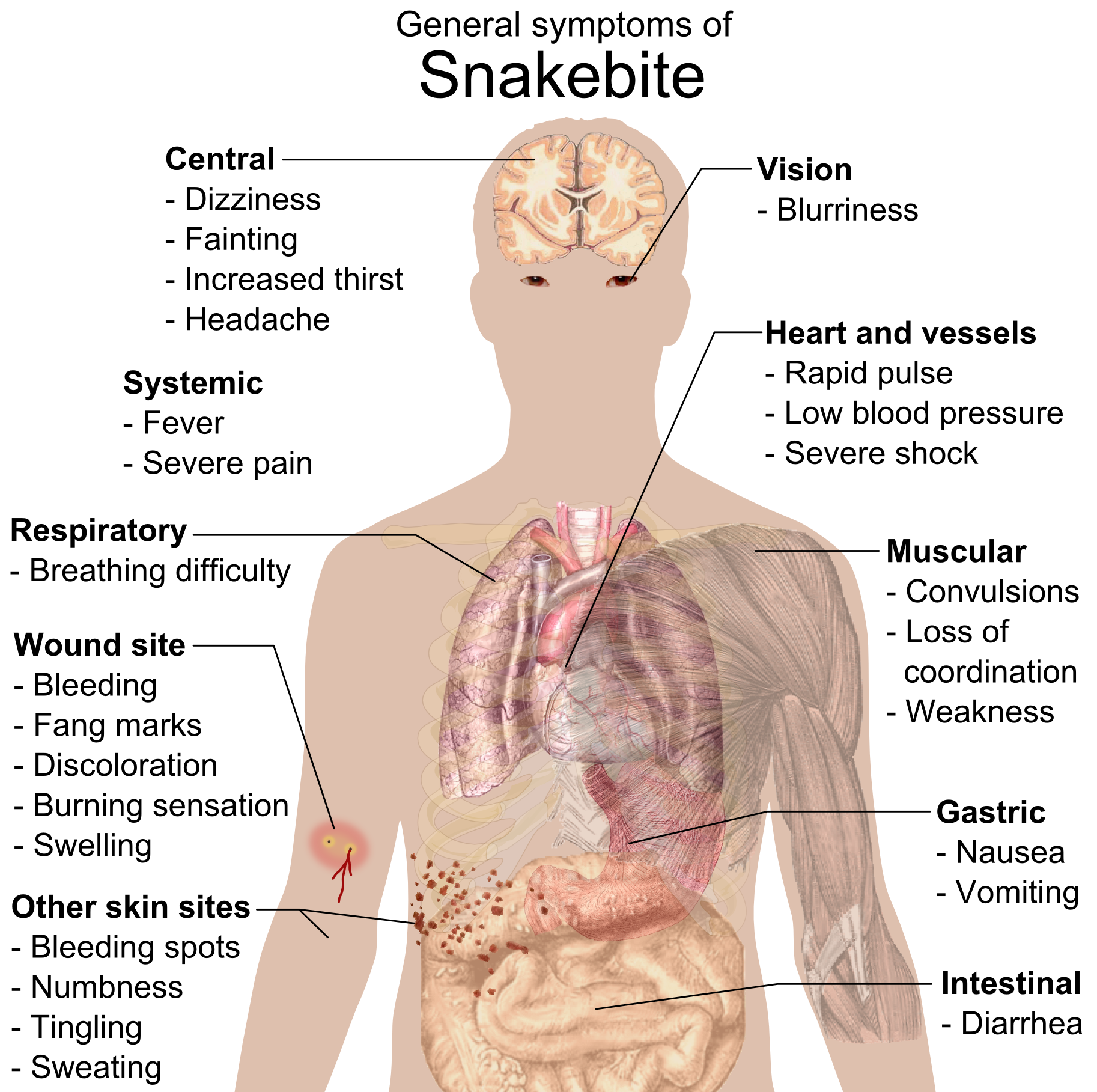 |
| Courtesy: World Health Organization |
Typically any snake venom is a concoction of a variety of short chain neurotoxins (SNX), long
Courtesy Haggstrom, Wikipedia
chain neurotoxins(LNX), enzymatic toxins such as Phospholipase2 (PLA2) plus a low proportion of other compounds. LNX is the most lethal component, SNX less so. Phospholipase2 breaks down phospholipids, disrupting cell membranes and leading to muscle necrosis, neurotoxicity, and inflammation. The chemistry , composition and potency of venom vary widely within and across snake species. Even geographical variations are seen. For example the Indian cobra's venom primarily contains neurotoxins that disrupt nerve impulses, leading to paralysis. African spitting cobras have a higher proportion of cytotoxins compared to Asiatic cobras. Some species in addition contain cardiotoxins too. Potential respiratory failure is responsible for a higher number of fatalities. Thus pathologically snakebites can cause nerve and muscle dysfunction (neurotoxicity), bleeding and clotting problems (hemotoxicity), and/or localized swelling, blisters, tissue death (cytotoxicity) etc.
Antivenoms are antibodies extracted from horses or camels. Adhering to strict protocols these animals are injected with snake venom below lethal threshold. Their immune system swings into action and produces antibodies against the venom. Antibodies are extracted from the blood serum, purified, processed and packaged. Worldwide there are only a handful of antivenom formulations available in the market and as mentioned earlier for effective medication it is important to know which species of snake caused the bite. What if we could develop an Universal Antivenom Formulation? That is the question Jacob Glanville ,immunoengineer and chief executive of biomedical firm Centivax in South San Francisco, California, asked and he found the answer in Tim Friede.
Tim Freide an American citizen has been living dangerously for the past almost two decades. A truck mechanic by profession and a snake collector by hobby, he has been bitten about 200 times by a variety of snakes accidentally and has intentionally injected himself with snake venoms for about 600 times. Not that he hasn't had set backs: once he was knocked off into a comma for 4 days. He took it all because he is a snake lover and want to be immune to their stings. A rather bizarre wish, one would think. But then that exactly is his claim to fame : An individual hyperimmune to envenomation of any kind.
Glanville saw the videos uploaded by Freide in the Youtube and immediately contacted Prof Peter Kwong at Columbia University. The duo lost no time to get in touch with Friede and a research project was born. They were literally after Friede's blood. Friede agreed. Friede's blood was subjected to systematic analysis by the research teams at Centivax and Columbia University. As expected Friede's hyperimmune blood indeed had an abundance of antibodies against LNX and SNX neurotoxins.
Next the team made a cocktail of SNX-B03 , LNX-D09 and Varespladib a known phospholipase2 inhibitor. This formulation was tested in mice against 19 diverse and intense venoms of the elapid group, classified as most lethal by World Health Organization. The formulation provided full protection against 13 and partial protection against the remaining 6. Glanville is excited: “That, for me, was a very exciting moment. A universal antivenom is now tractable, within reach, and we have the tool, and we just need to keep turning the crank to find it.”
Glanville is hopeful that philanthropic societies, governments and pharmaceutical companies will collectively provide the necerssary financial support. Thus the road to designing an universal polyvalent antivenom is clear. However making it available/accessible to the victim on the spot remains a challenge.
REFERENCES:
1. Snakebite envenomation turns again into a neglected tropical disease.
2.Snake venom protection by a cocktail of varespladib and broadly neutralizing human antibodies. Glanville et al., Cell (188) 3117-3134, 2025.